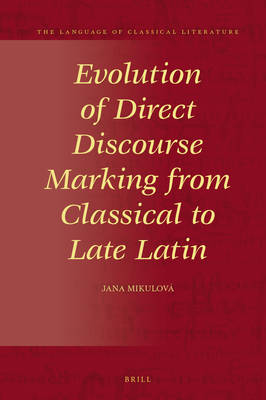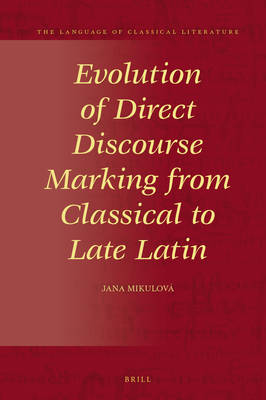
- Afhalen na 1 uur in een winkel met voorraad
- Gratis thuislevering in België vanaf € 30
- Ruim aanbod met 7 miljoen producten
- Afhalen na 1 uur in een winkel met voorraad
- Gratis thuislevering in België vanaf € 30
- Ruim aanbod met 7 miljoen producten
Zoeken
Evolution of Direct Discourse Marking from Classical to Late Latin
Jana Mikulová
€ 216,95
+ 433 punten
Omschrijving
If you read a work by Cicero or Seneca and then open The Pilgrimage of Egeria, Augustine, or Gregory of Tours, you will soon notice that Late Latin authors quote authorities differently. They provide a perfect example of synthesising two potentially conflicting traditions - "classical" and "biblical". This book examines how the system of direct discourse marking developed over the centuries. It focuses on selecting marking means, presents the dynamics of change and suggests factors that might have been at play. The author guides the reader on the path that goes from the Classical prevalence of inquit to the Late innovative mix of marking words including the very classical inquit, an increased use of dico, the newly recruited ait, and dicens, influenced by biblical translations. The book suggests that Late authors tried to make reading and understanding easier by putting quotative words before quotations and increasing the use of redundant combinations (e.g. "he answered saying").
Specificaties
Betrokkenen
- Auteur(s):
- Uitgeverij:
Inhoud
- Aantal bladzijden:
- 172
- Taal:
- Engels
- Reeks:
- Reeksnummer:
- nr. 37
Eigenschappen
- Productcode (EAN):
- 9789004524996
- Verschijningsdatum:
- 22/09/2022
- Uitvoering:
- Hardcover
- Formaat:
- Genaaid
- Afmetingen:
- 155 mm x 235 mm
- Gewicht:
- 392 g

Alleen bij Standaard Boekhandel
+ 433 punten op je klantenkaart van Standaard Boekhandel
Beoordelingen
We publiceren alleen reviews die voldoen aan de voorwaarden voor reviews. Bekijk onze voorwaarden voor reviews.











